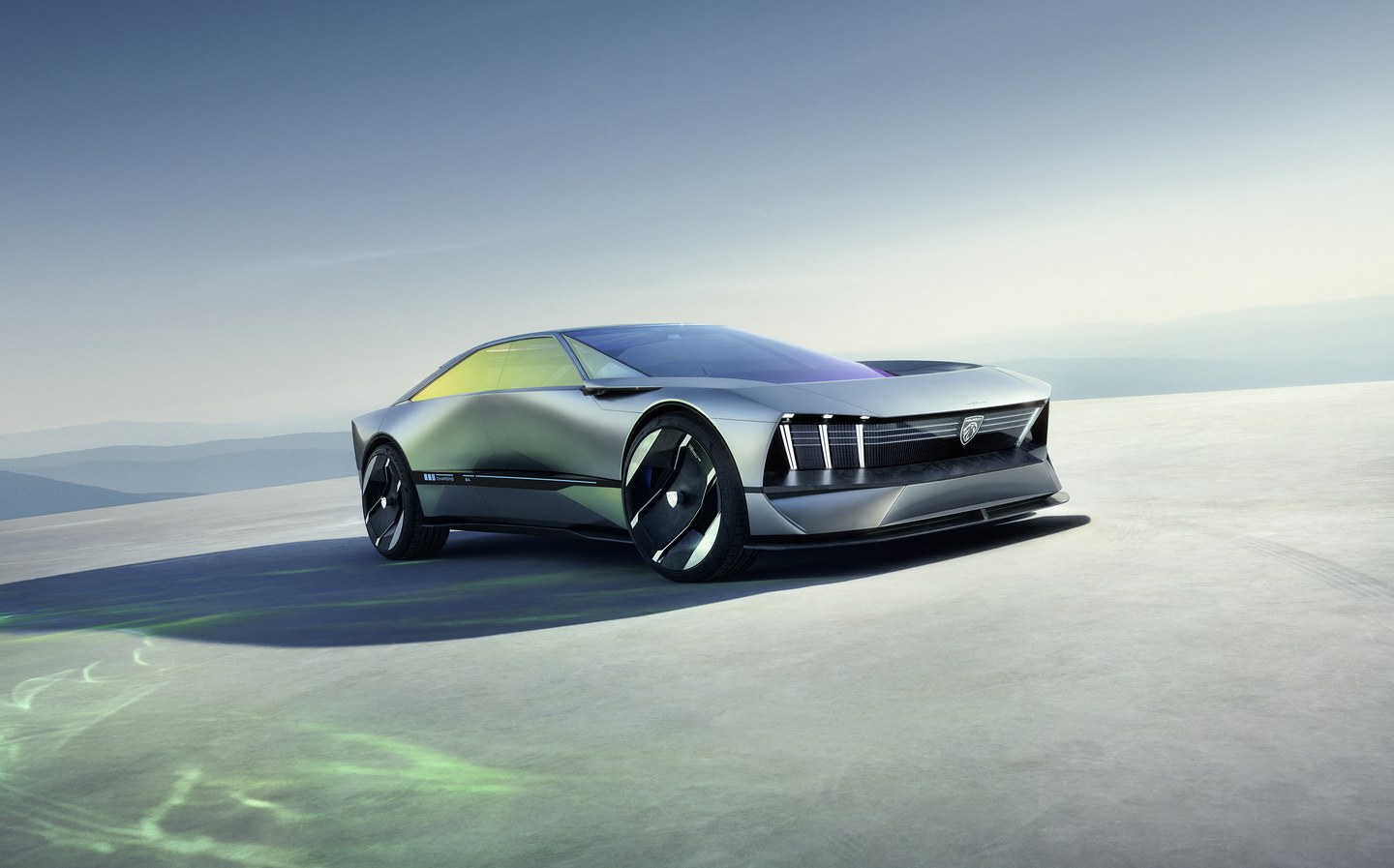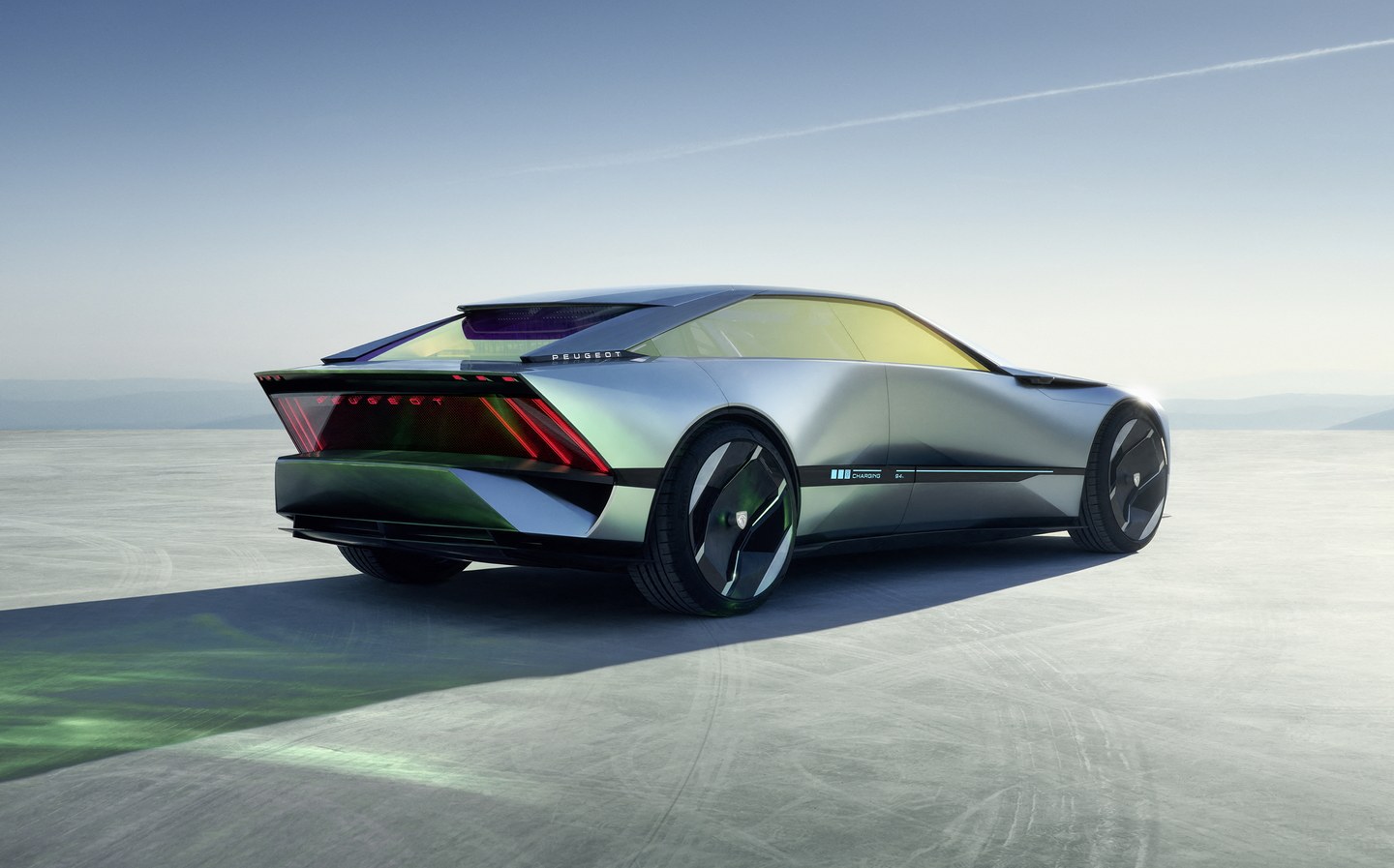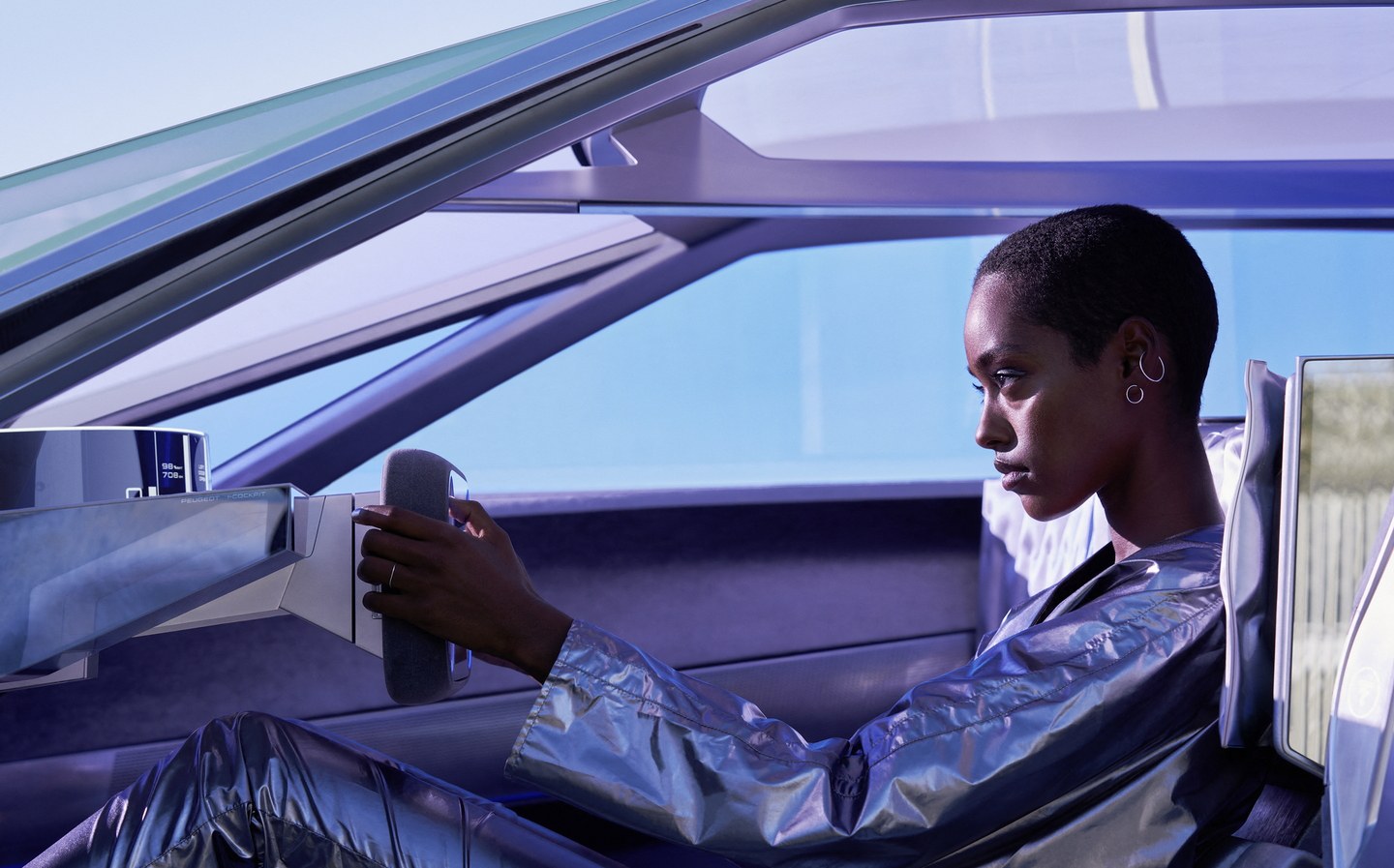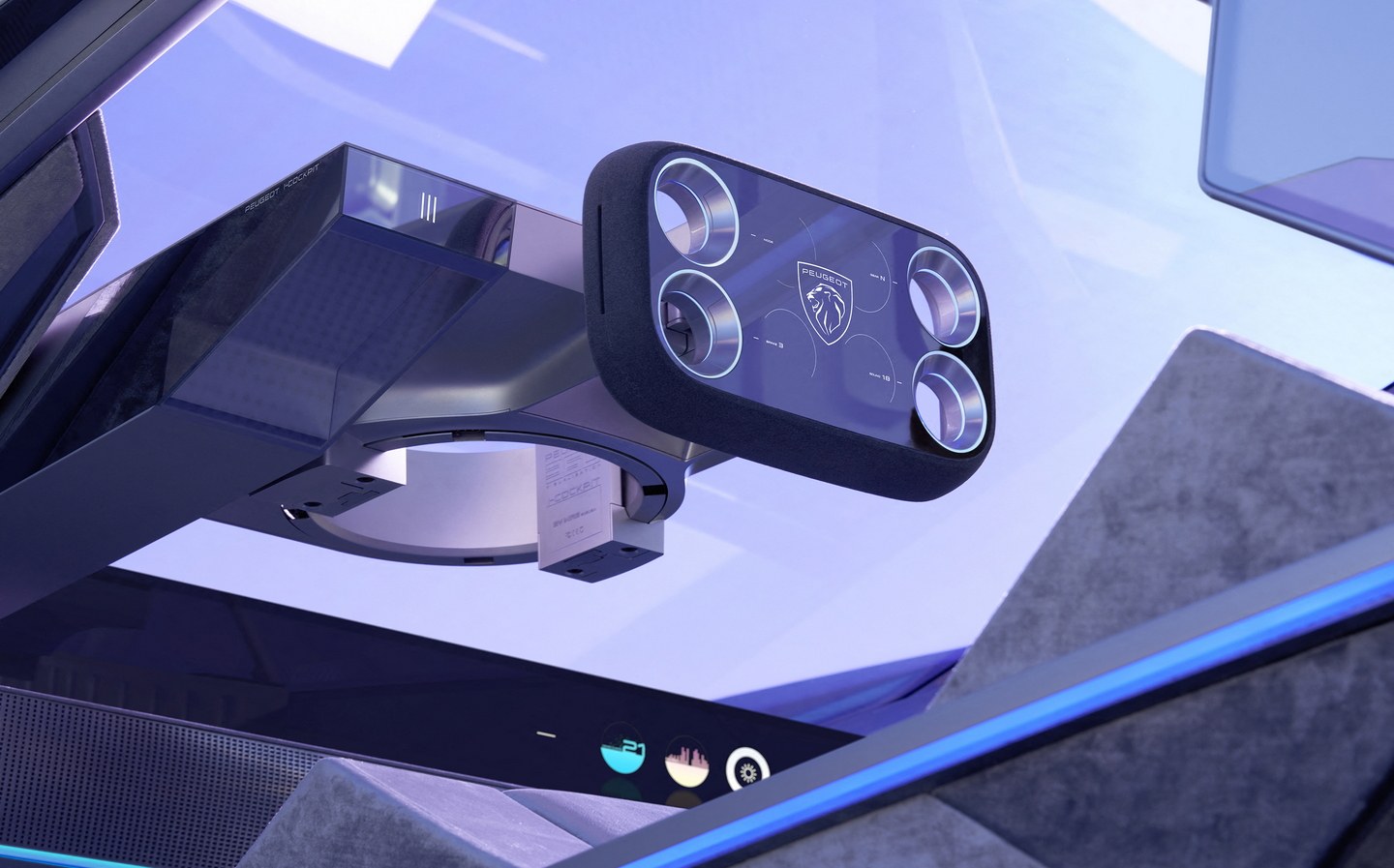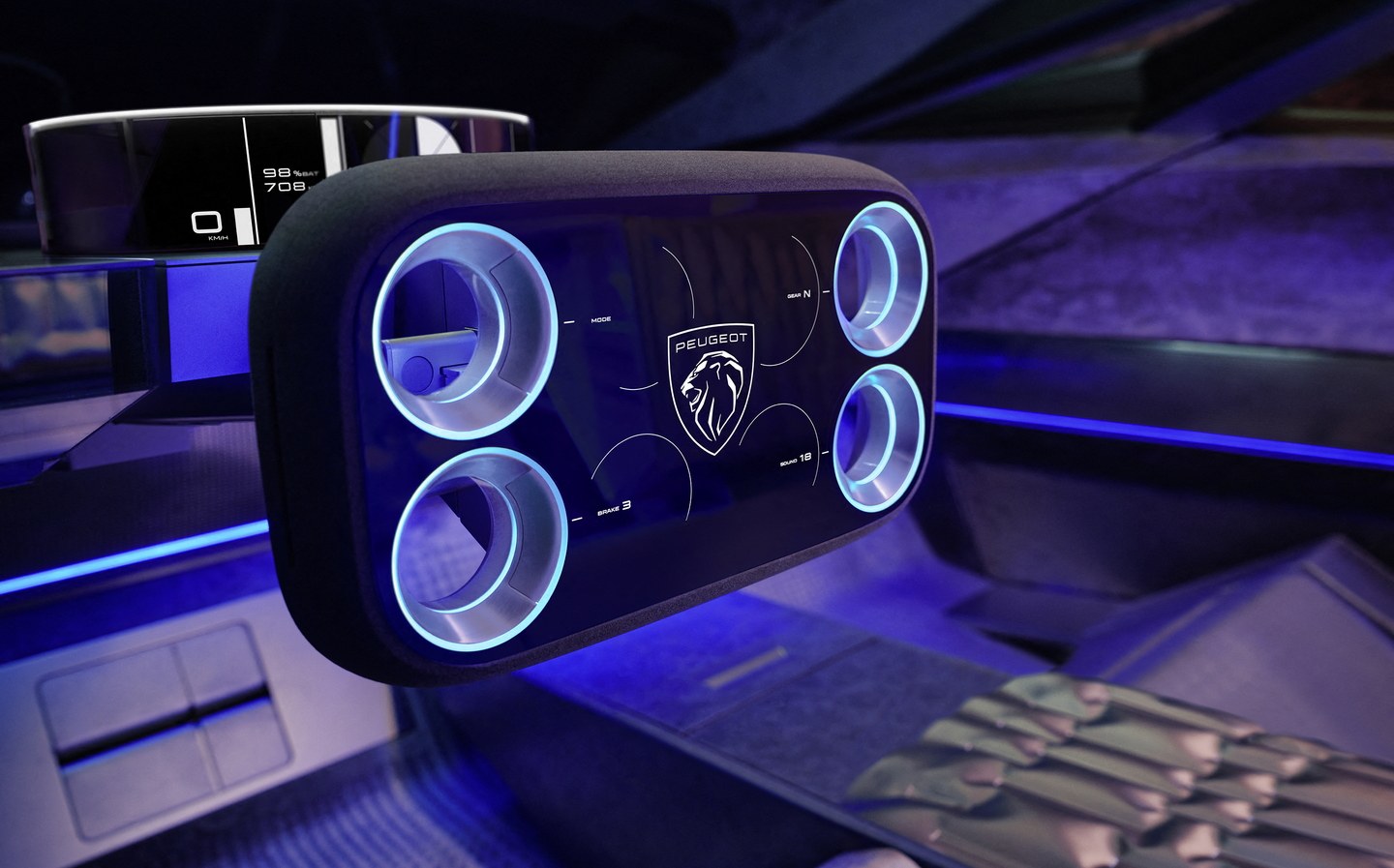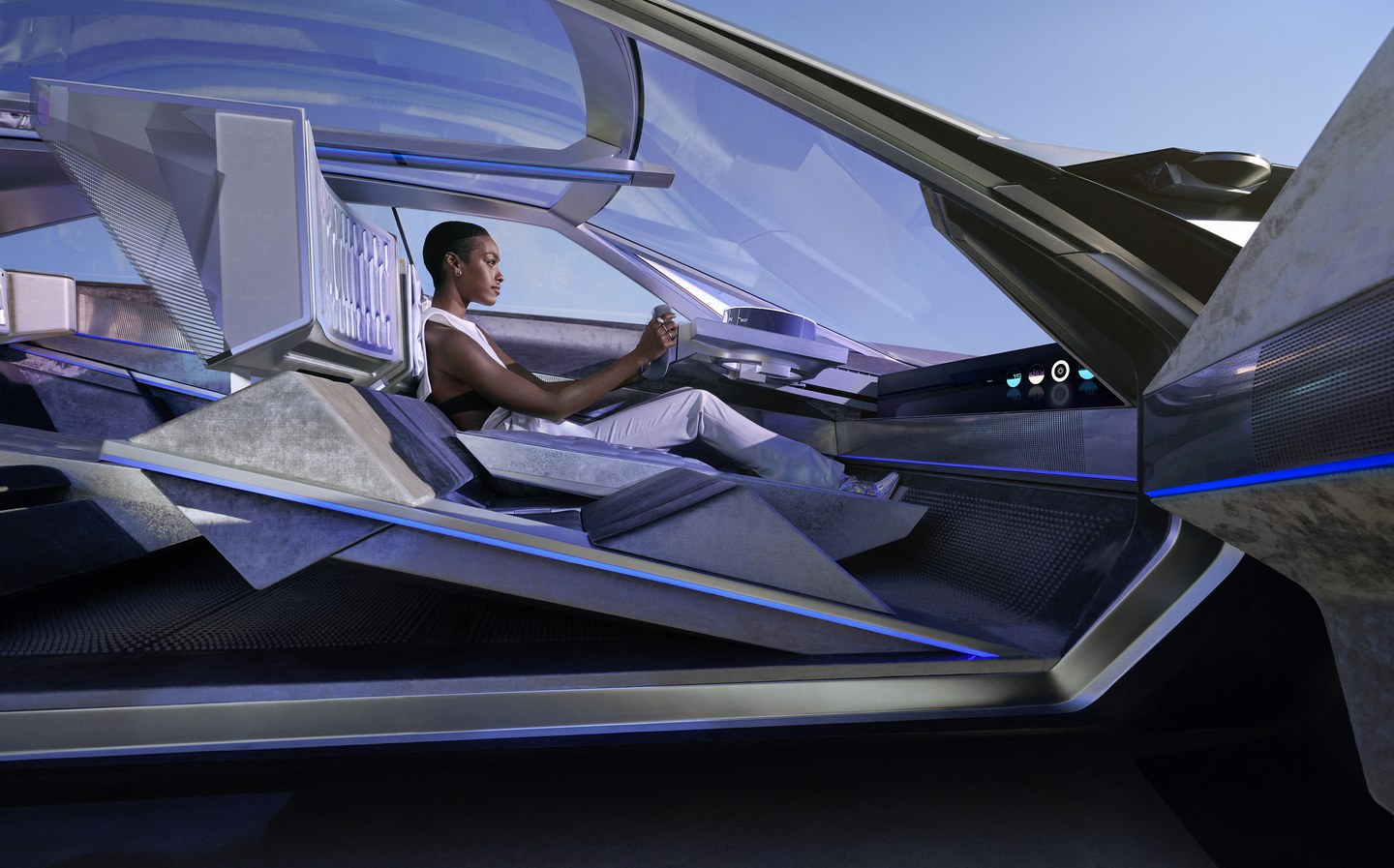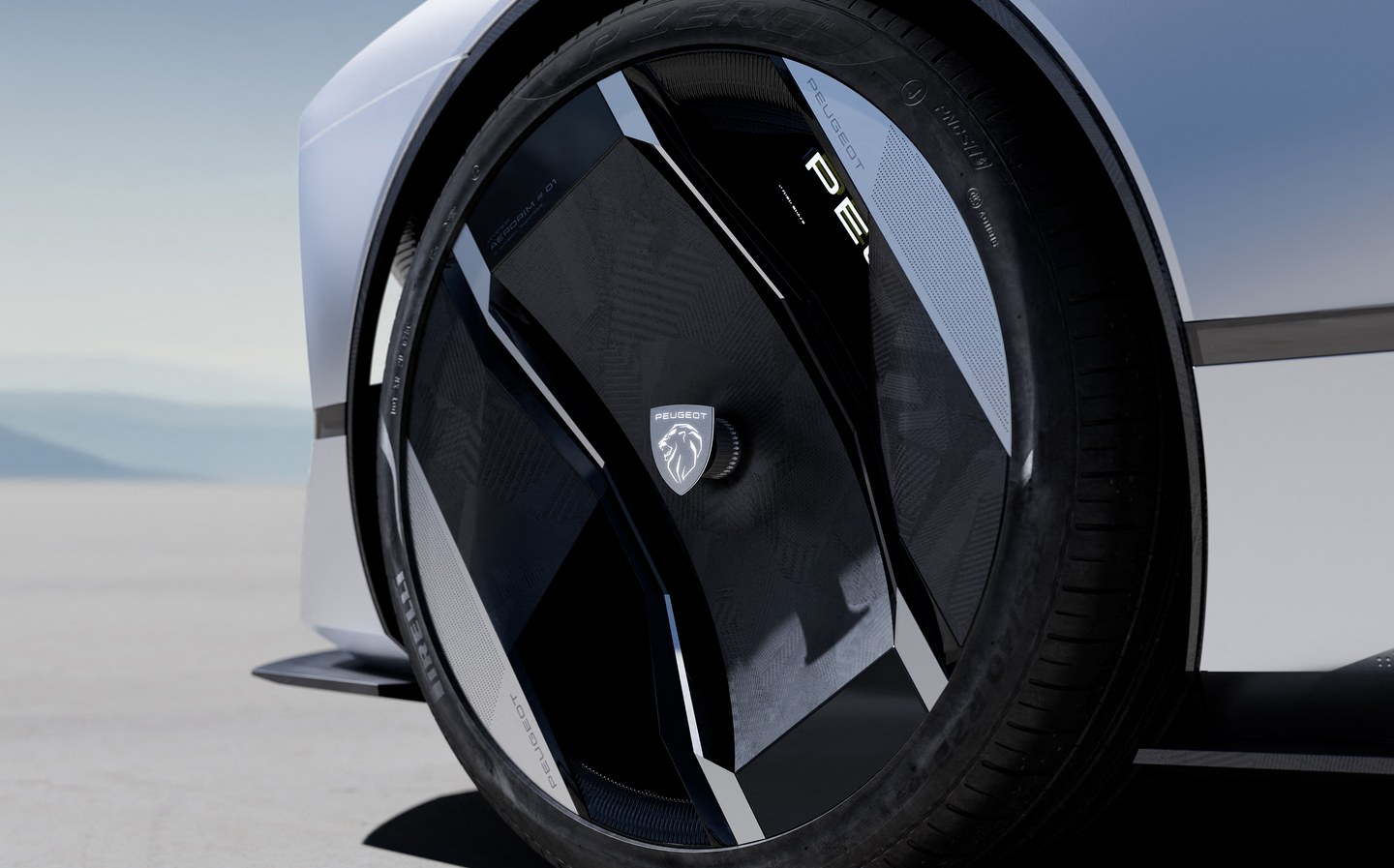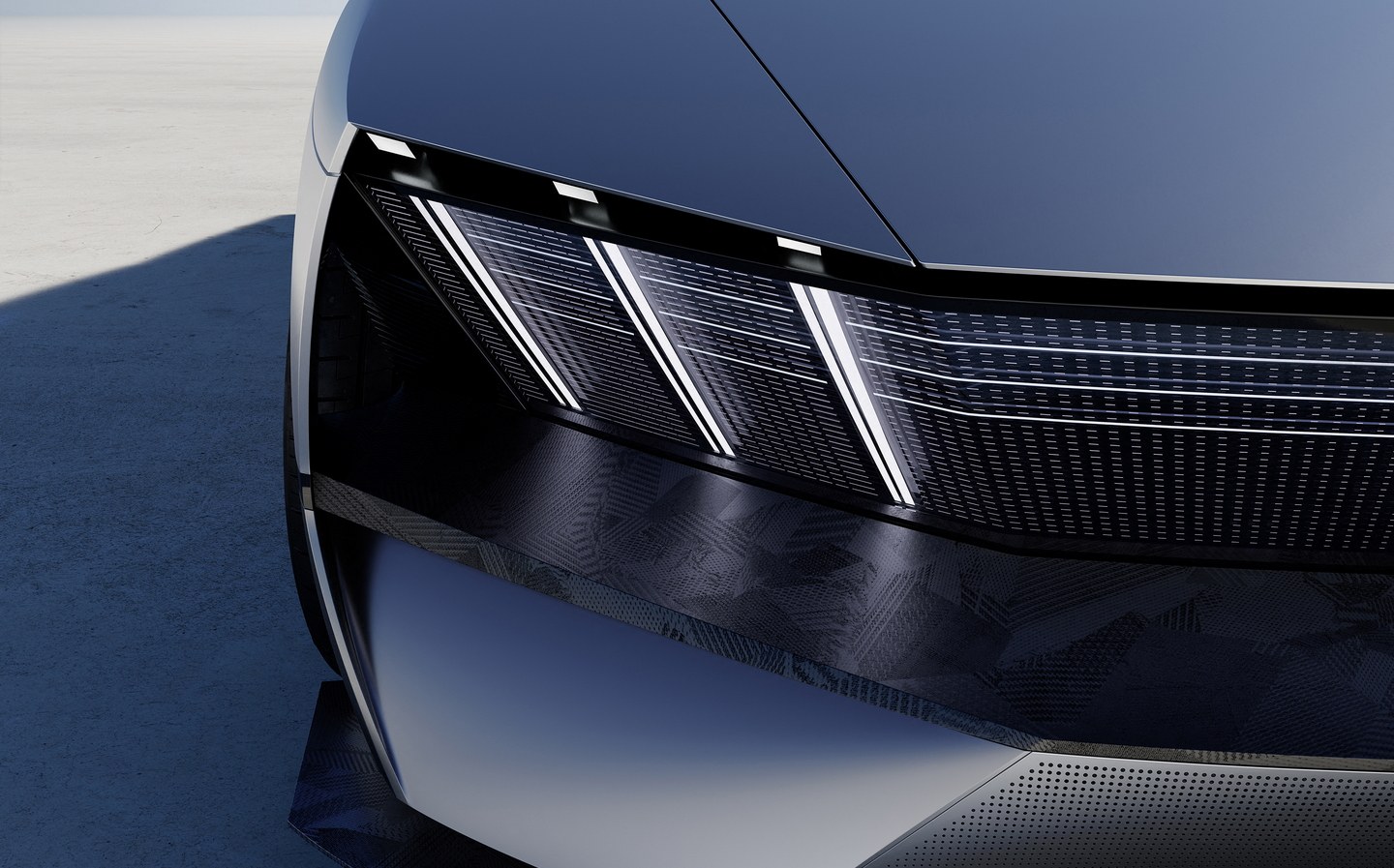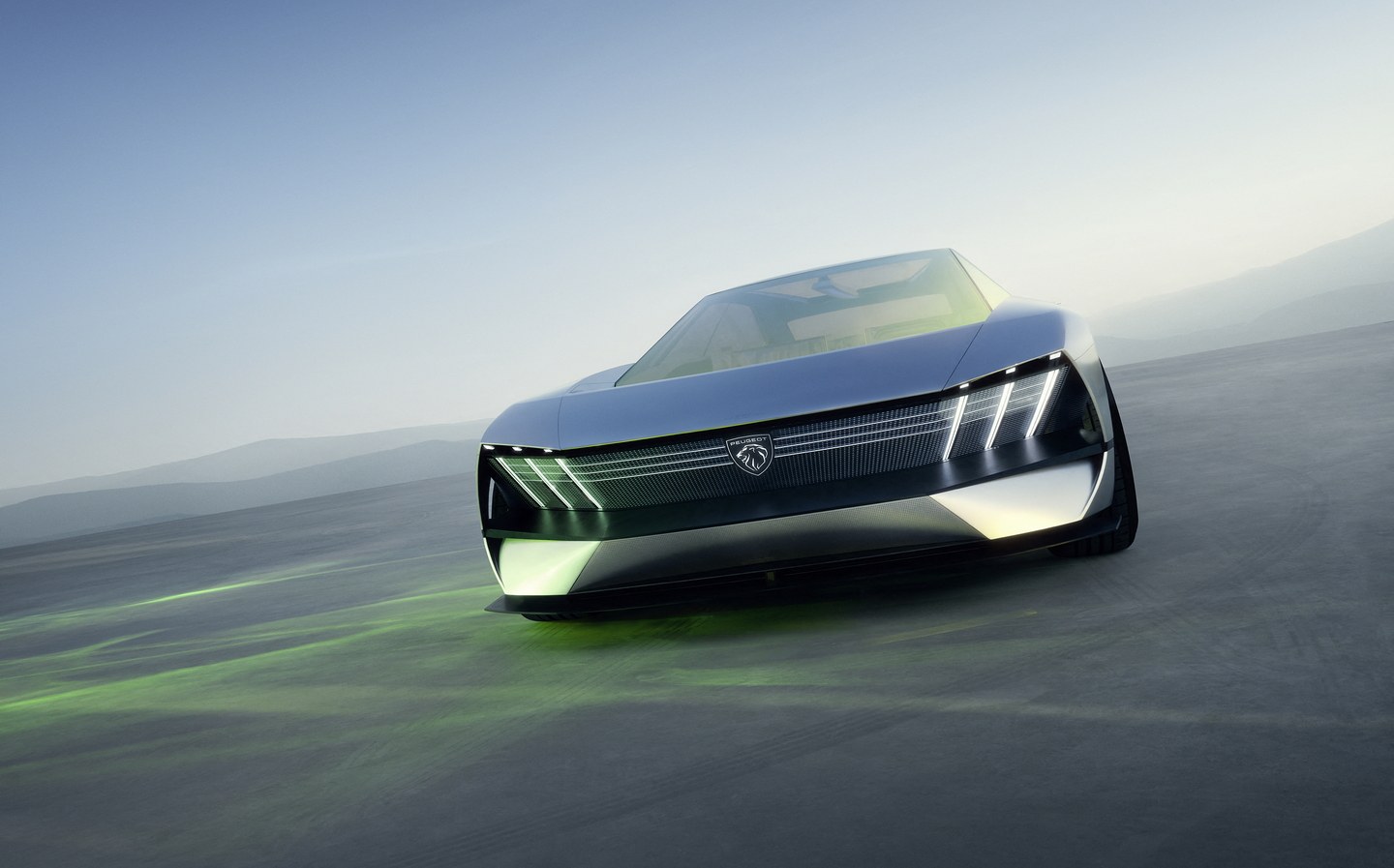Inception concept hints at what Peugeots will look like from 2025
Will futuristic design language lure you behind the steering rectangle?
Peugeot has taken the covers off a new concept car which hints at its future electric vehicles as well as previewing a new design language set to be rolled out from 2025.
The Peugeot Inception concept is built on the first of four new “BEV-by-design” (battery electric vehicle) platforms — the structures which underpin different types of car — set to be rolled out across the the Peugeot-owning Stellantis group from 2023.
Sitting on the “STLA Large” platform, the Inception takes the form of a long (5m), low (1.4m) saloon with angular styling, large swathes of glass canopy and a strange, futuristic interior.
The overall design of the Inception, Peugeot says, offers a glimpse of what the company’s models will look like from the middle of the decade, though it does incorporate a few familiar design cues such as the three-clawed front lighting signature seen on models such as the current Peugeot 208 and 508.
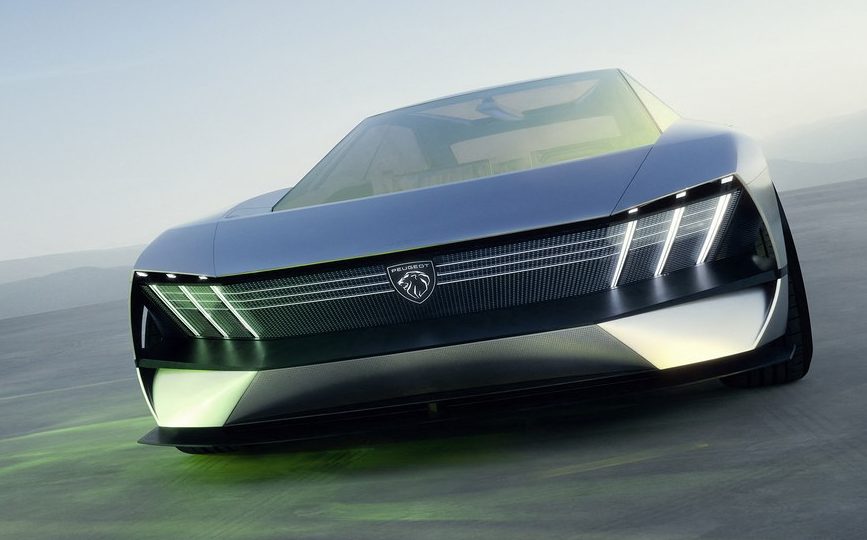
The most striking visual aspect of the Inception’s design is the sheer expanse of glass — some 7.52 square metres of it — that plunges below the level of the car’s beltline. This is designed to create the impression for occupants of a particularly airy cabin with an unobstructed front view, something underscored by the lack of traditional dashboard or interior bulkhead.
According to Peugeot, the glass is of an architectural variety and has been coated with similar metal oxides to the visors on astronauts’ helmets to better insulate the cabin from extremes of heat.
The rear end features glass, too, with the back lights (echoing the claws at the front) located behind another pane giving it a high-tech look (and, from a purely practical point of view, would presumably make it much easier to clean).
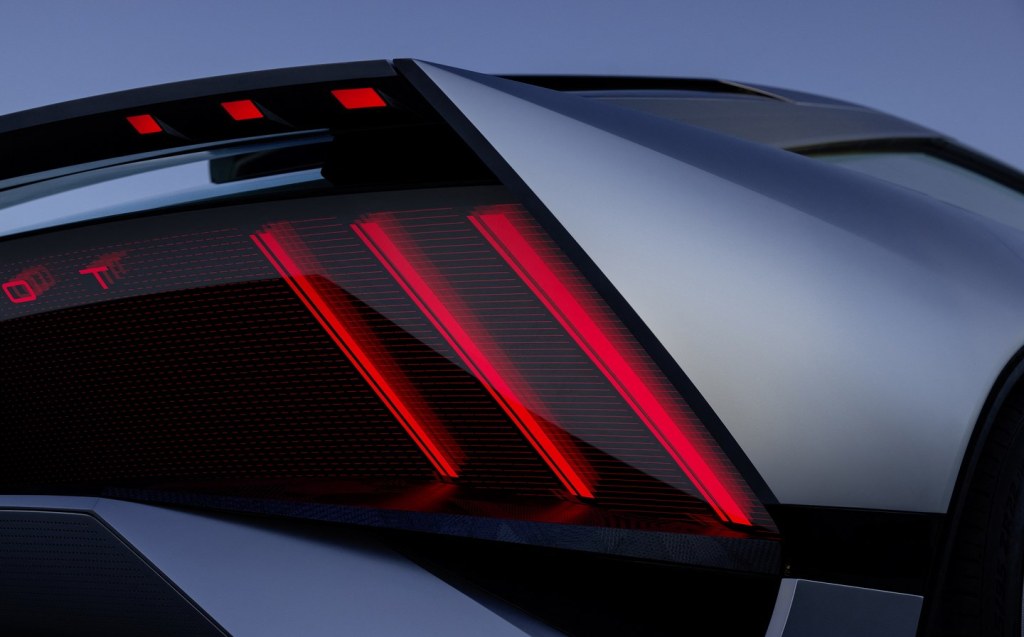
One of the subtler aspects of the exterior design is the “tech bar” running along each of the doors that emits messages when the driver or passenger approach.
Peugeot says that the artificial intelligence system linked in with the tech bar can recognise the person approaching the vehicle and pre-set the temperature and seat position and posture accordingly.
Unusual though the Inception’s exterior is, wilder still is its interior.
The concept does away with a traditional steering wheel in favour of what the company describes as its “Hypersquare”, a rectangular controller “inspired by video games”.
According to the firm, the Hypersquare allows for a “new, natural, simpler and safer way of driving” by allowing the driver to grip the controller by the holes in its surface. This, in theory, keeps the driver’s thumbs free to operate the tablet-like controls in the centre of the Hypersquare in a similar fashion to using a smartphone.
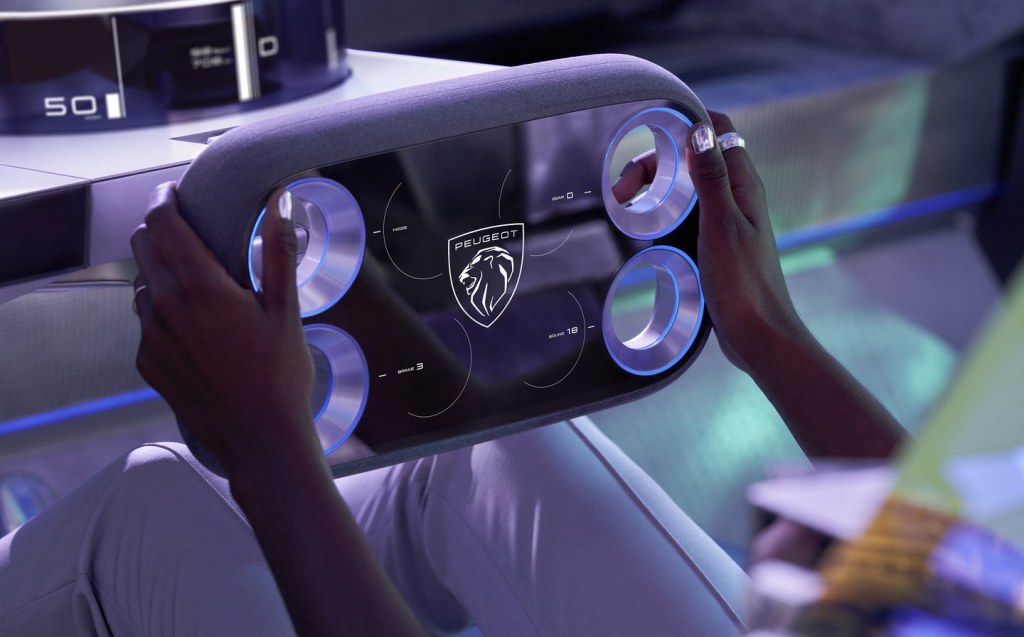
Functions such as the air conditioning, stereo volume and the advanced driver assistance features can all be controlled from the Hypersquare, with the unit also responsible for working the steering-by-wire.
With the concept apparently capable of Level 4 self-driving, during the transition between driver and autonomous operation, the Hypersquare retracts with the panoramic glass screen stretching to the floor opening up to allow an uninterrupted view of the road ahead, made possible by the lack of dashboard and bulkhead.
What are the different levels of self-driving vehicle?
An odd cylindrical device known as the Halo Cluster mounted on the dashboard further displays information to the driver, passengers and anyone outside the car with a 360-degree display.
“This external communication reinforces the concept of sharing and a new automotive vision,” says Peugeot, which does somewhat suggest that the Halo Cluster was designed less for function and more for visual impact.
The floor and low, ergonomic seats are covered in a type of velvet-like material made from recycled polyester, the sheen on which is designed to interact with the light entering the cabin from above.
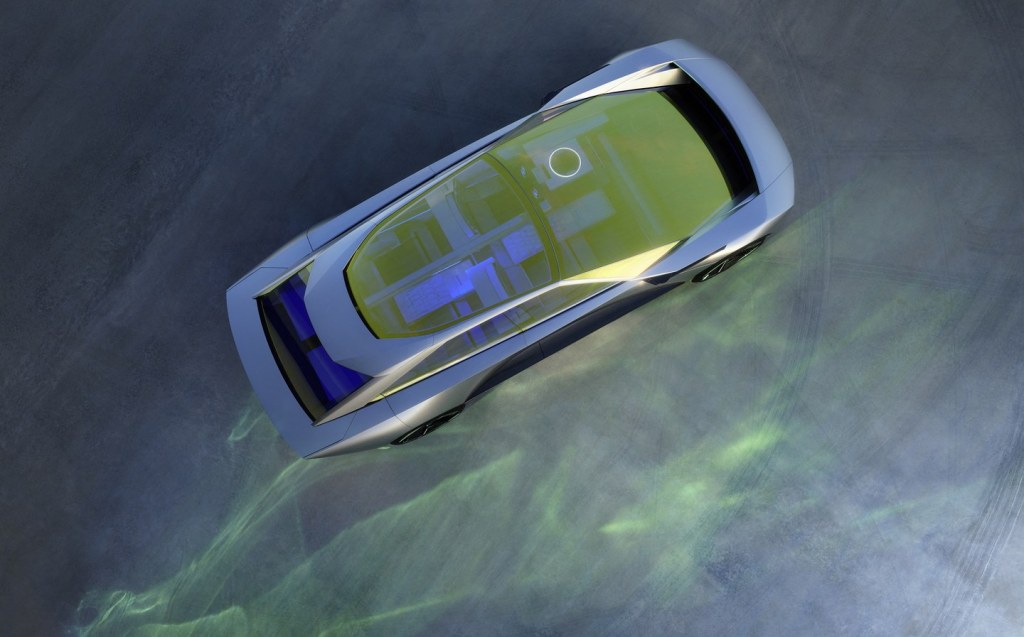
While the Peugeot Inception concept is certainly dazzling from a visual point of view, what lies under the skin is equally impressive and bodes well for Stellantis’ future electric vehicle offerings.
The Inception features dual electric motors, all-wheel drive and a 100kWh battery pack allowing it to achieve claimed headline figures of 671bhp, a 0-62mph time of under three seconds, a shade under 500 miles of range and energy efficiency of 4.9 miles per kilowatt hour.
With 800-volt electrical architecture, the concept (and by extension future cars based on the STLA Large EV platform) can add 93 miles of range in five minutes during a high-speed charging stop.
Inductive wireless charging is possible in the concept, too, suggesting that’s an area Peugeot is also exploring for vehicles further down the line.
According to Peugeot, the design language previewed by the Inception concept will trickle down to even the company’s smallest cars in the coming years.
Related articles
- After reading about the Peugeot Inception concept, you might be interested to read our review of the Volkswagen ID.5 GTX
- Keen to go electric? Here are the top 10 longest-range electric cars
- Jeremy Clarkson was not very impressed with the Peugeot e-208 electric car
Latest articles
- Bedeo Defender 110 2024 review: Does electric Landie with in-wheel motors make for a perfect off-roader?
- F1 2024 calendar and race reports: What time the next grand prix starts and what happened in the previous rounds
- BYD Seal U 2024 review: Chinese brand adds plug-in hybrid SUV to its electrified line-up
- New Mini John Cooper Works revs up for Nürburgring 24-hour race debut
- Ineos Grenadier Quartermaster 2024 review: British pick-up is a tough mudder but too flawed to be a real workhorse
- Mini Cooper SE 2024 review: All-new electric hatchback is playing to the crowd
- Jeep Wrangler 2024 review: Impressive off road but you’d still have to be a committed contrarian to buy one
- Around 500 Ford workers in UK could go on strike over cost-of-living pay dispute
- Durham solar car team to take part in 24-hour race with smart tyres and night-driving solution


